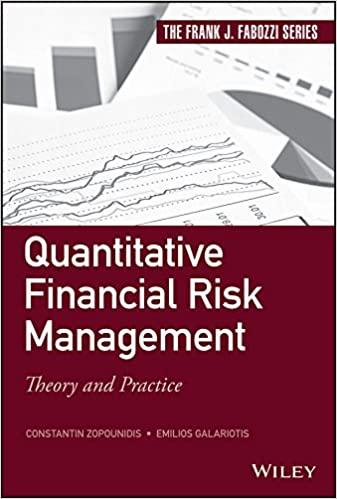




6 10 points eBook Hint Print References Suppose we have the following returns for large-company stocks and Treasury bills over a six-year period: Year Large Company US Treasury Bill 1 3.96% 4.50% 2 14.12 4.88 3 19.01 3.80 4 -14.67 6.96 -32.16 4.88 6 37.26 6.14 a. Calculate the arithmetic average returns for large-company stocks and T-bills over this period. (Do not round intermediate calculations and enter your answers as a percent rounded to 2 decimal places, e.g., 32.16.) b. Calculate the standard deviation of the returns for large-company stocks and T-bills over this period. (Do not round intermediate calculations and enter your answers as a percent rounded to 2 decimal places, e.g., 32.16.) c-1. Calculate the observed risk premium in each year for the large-company stocks versus the T-bills. What was the average risk premium over this period? (A negative answer should be indicated by a minus sign. Do not round intermediate calculations and enter your answer as a percent rounded to 2 decimal places, e.g., 32.16.) c-2. Calculate the observed risk premium in each year for the large-company stocks versus the T-bills. What was the standard deviation of the risk premium over this period? (Do not round intermediate calculations and enter your answer as a percent rounded to 2 decimal places, e.g., 32.16.) a. % Large-company stocks T-bills % b. Large-company stocks % T-bills % c-1. Average risk premium % 7 10 points eBook Print Check my work You bought one of Great White Shark Repellant Co.'s 7.4 percent coupon bonds one year ago for $1,041. These bonds make annual payments and mature 20 years from now. Suppose you decide to sell your bonds today, when the required return on the bonds is 6 percent. The bonds have a par value of $1,000. If the inflation rate was 4 percent over the past year, what was your total real return on investment? (Do not round intermediate calculations and enter your answer as a percent rounded to 2 decimal places, e.g., 32.16.) Total real return % 8 10 points eBook C Print References Check my work Assume that the returns from an asset are normally distributed. The average annual return for this asset over a specific period was 13.2 percent and the standard deviation of those returns in this period was 41.1 percent. a. What is the approximate probability that your money will double in value in a single year? (Do not round intermediate calculations and enter your answer as a percent rounded to 2 decimal places, e.g., 32.16.) b. What about triple in value? (Do not round intermediate calculations and enter your answer as a percent rounded to 6 decimal places, e.g., .161616.) a. Probability of doubling % b. Probability of triping % 9 10 points eBook Print References Check my work An asset has had an arithmetic return of 11.1 percent and a geometric return of 9.1 percent over the last 70 years. What return would you estimate for this asset over the next 10 years? 24 years? 31 years? (Do not round intermediate calculations and enter your answers as a percent rounded to 2 decimal places, e.g., 32.16.) % 10 years % 24 years % 31 years 10 10 points eBook Print References Check my work Suppose we have the following Treasury bill returns and inflation rates over an eight- year period: Year Treasury Bills Inflation 1 7.96% 9.57% 8.76 13.22 6.59 7.71 5.74 5.48 6.17 7.47 8.41 9.84 11.38 14.14 13.02 13.56 a. Calculate the average return for Treasury bills and the average annual inflation rate for this period. (Do not round intermediate calculations and enter your answers as a percent rounded to 2 decimal places, e.g., 32.16.) b. Calculate the standard deviation of Treasury bill returns and inflation over this period. (Do not round intermediate calculations and enter your answers as a percent rounded to 2 decimal places, e.g., 32.16.) c. What was the average real return for Treasury bills over this period? (A negative answer should be indicated by a minus sign. Do not round intermediate calculations and enter your answer as a percent rounded to 2 decimal places, e.g., 32.16.) a. % Treasury bills Inflation % b. Treasury bills % Inflation % C. Average real return % 2345678











